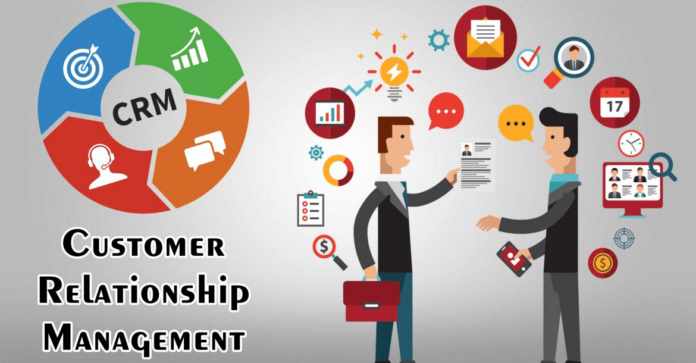“In the dynamic world of modern business, one constant remains unchanged: the paramount role of the customer. Cultivating and nurturing robust relationships with customers has never been more vital.”
Customer Relationship Management (CRM) emerges as the strategic cornerstone, empowering enterprises to not only gain profound insights into their clientele but also to forge enduring connections that propel growth and prosperity.
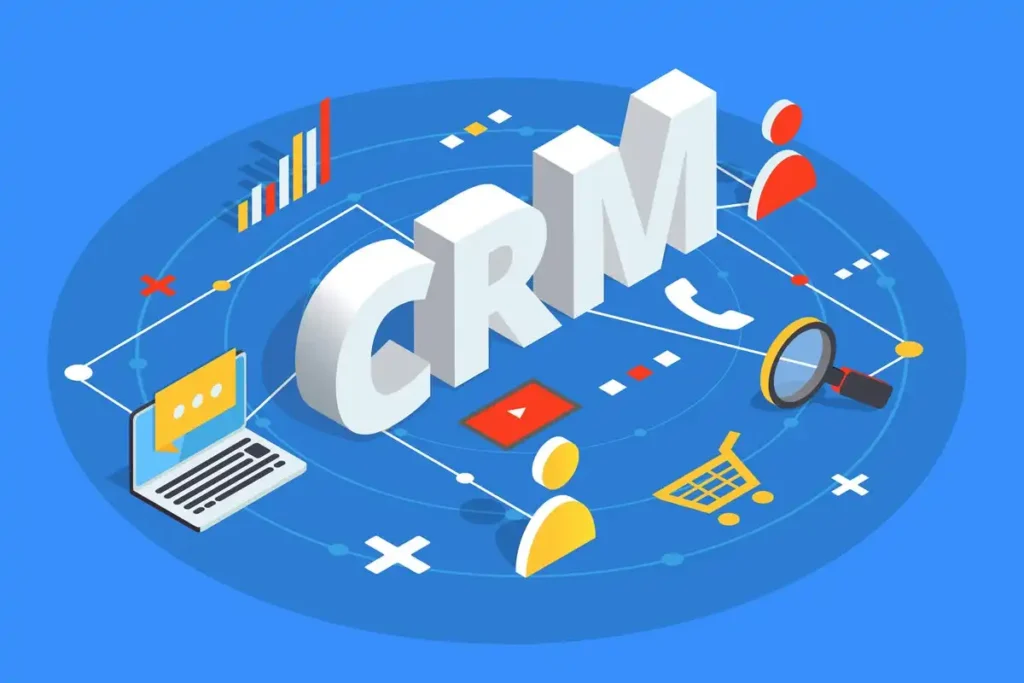
In an environment where businesses are striving to distinguish themselves in fiercely competitive markets, this article embarks on a journey into the realm of CRM, unveiling its critical significance, core strategies, and the technological tools that have revolutionized how companies engage with their cherished clientele.
Read Also: How Companies Can Take Advantage of Digital Marketing
Introduction to Customer Relationship Management

Customer Relationship Management (CRM) is the linchpin of contemporary business operations. It offers a structured framework for managing customer interactions, deciphering their preferences, and delivering tailor-made experiences.
The essence of CRM lies in its ability to elevate customer satisfaction, foster loyalty, and drive profitability. It transcends mere contact management, delving deep into the realm of customer understanding.
By harnessing this understanding, businesses can fine-tune their products, services, and communication to harmonize with customer expectations. In this way, (CRM) stands as a potent catalyst for business expansion, identifying avenues for upselling, cross-selling, and market diversification.
By retaining existing customers while attracting new ones, CRM fuels revenue growth and profitability. This article delves into the pivotal role of (CRM) in steering business growth and explores the indispensable strategies and tools underpinning its modern business operations.
Related: Social Media Marketing (SMM): A Complete Guide for Businesses
CRM Benefits for Business Growth
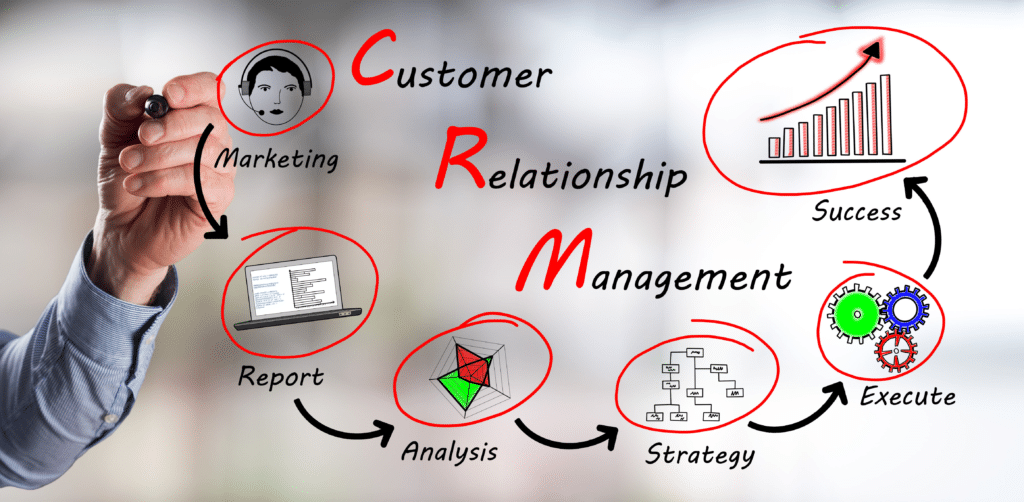
How (CRM) Can Contribute to Business Growth:
- Increased Sales: (CRM) systems serve as invaluable instruments for comprehending customer behaviour and preferences. Armed with this knowledge, businesses can fine-tune sales and marketing strategies, resulting in elevated conversion rates and amplified sales.
For instance, segmenting customers based on purchase history enables businesses to dispatch precisely targeted promotions, engendering a surge in sales.
- Improved Customer Retention: Customer retention serves as a cornerstone for long-term business triumph. (CRM) tools are instrumental in monitoring and managing customer interactions, enabling personalized communication and service.
It’s noteworthy that even a modest 5% boost in customer retention, as articulated in a Harvard Business Review study, can catapult profits by 25-95%.
- Enhanced Decision-Making: CRM systems have a treasure trove of data and analytics that fuel informed decision-making. Enterprises can scrutinize the performance of marketing campaigns, gauge customer satisfaction, and track sales trends.
This data-driven approach empowers organizations to pivot in real time, thereby fostering improved business outcomes.
Related: 10 Reasons Some Companies Choose Stock Market Listing
Statistics and Case Studies
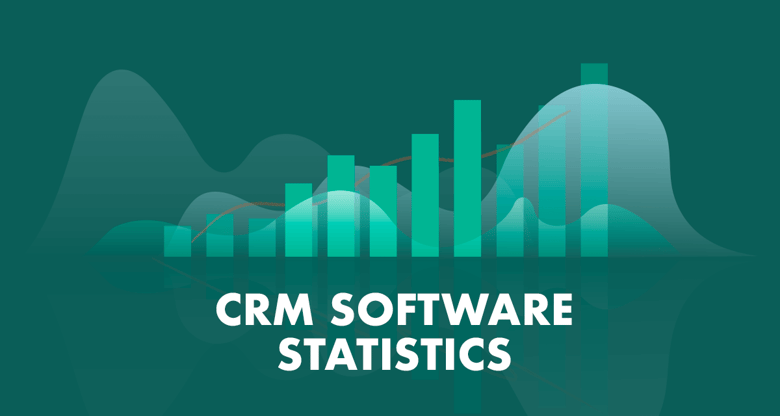
- Salesforce Case Study: Salesforce, a (CRM) industry leader, conducted a study underscoring that companies proficiently implementing CRM systems witnessed an average Return on Investment (ROI) of a remarkable 245%. This ROI encompasses productivity enhancements, ameliorated sales conversion rates, and superior customer service.
- HubSpot Statistics: HubSpot, a prominent CRM and marketing platform, unveiled that companies leveraging (CRM) software for marketing witnessed a striking 48.2% boost in revenue and a 40% upswing in sales productivity.
- Aberdeen Group Research: Aberdeen Group’s research underscores that businesses integrating CRM systems enjoy, on average, a 27.1% surge in customer retention and a 25.5% upswing in sales. These statistics underscore the palpable correlation between (CRM) integration and business growth.
- Amazon’s Personalization: Amazon exemplifies how CRM data can be a driving force behind business growth. By harnessing customer data, Amazon delivers highly personalized product recommendations, a strategy reportedly contributing to 35% of its sales. These statistics and case studies substantiate the pivotal impact of CRM on business growth.
Be it augmenting sales, enhancing customer retention, or steering informed decision-making, (CRM) stands as an indispensable tool for enterprises poised to flourish in today’s fiercely competitive business landscape.
Key CRM Features and Tools

- Contact Management: Contact management is the cornerstone of CRM systems, facilitating the organization and centralization of customer data, encompassing contact details, purchase history, and interaction records.
- Support for Business Growth:
- Streamlined Communication: A comprehensive customer database enables efficient and personalized communication, bolstering relationships and customer satisfaction.
- Improved Lead Nurturing: Contact management ensures the effective tracking of leads and prospects, guaranteeing timely engagement.
- Targeted Marketing: Accurate contact data paves the way for segmented marketing campaigns, delivering tailored messages and offers to distinct customer groups, hence driving enhanced conversion rates.
- Support for Business Growth:
- Sales Automation: Sales automation tools within (CRM) systems streamline and optimize an array of sales-related tasks, from lead tracking to order processing.
- Support for Business Growth:
- Enhanced Productivity: Automation slashes manual data entry and administrative workload, empowering sales teams to focus on revenue-generating activities, ultimately propelling sales.
- Lead Scoring and Prioritization: Sales automation identifies high-value leads, ensuring that sales efforts are concentrated where they are most likely to yield results.
- Streamlined Sales Processes: (CRM) harmonizes the sales pipeline, ensuring that deals progress efficiently from initial contact to closure, culminating in shorter sales cycles and increased revenue.
- Support for Business Growth:
- Analytics and Reporting: Analytics and reporting tools within CRM systems offer insights into customer behaviour, sales performance, and other crucial metrics.
- Support for Business Growth:
- Informed Decision-Making: Analytics empowers data-driven decisions grounded in insights into customer preferences, sales trends, and campaign effectiveness.
- Customer Segmentation: CRM analytics enables customer segmentation based on various criteria, priming the stage for targeted marketing campaigns and personalized customer experiences.
- Performance Tracking: CRM data allows for the continuous monitoring of sales teams, marketing campaigns, and customer service efforts, steering continuous improvement and optimization and delivering superior results.
- Support for Business Growth:
Implementing CRM Strategies
Effective Strategies for Implementing (CRM) in a Business:
- Define Your Goals and Objectives:
- Set clear objectives for your CRM implementation, whether it’s enhancing customer satisfaction, boosting sales, or improving customer retention.
- Choose the Right CRM Software:
- Carefully select a (CRM) system that aligns with your business’s needs, budget, and scalability.
- Involve Key Stakeholders:
- Engage employees from various departments who will be using the (CRM) to ensure its alignment with the specific needs of your organization.
- Map Your Customer Journey:
- Gain insights into how customers interact with your business at different touchpoints, providing the foundation for designing your (CRM) workflows.
- Design Custom Workflows:
- Create workflows that harmonize with your business processes and customer journey, integrating data entry, lead management, and customer support processes seamlessly.
- Data Migration and Cleanup:
- Migrate existing customer data into the (CRM), ensuring its accuracy and currency for effective customer management.
- User Training and Adoption:
- Conduct thorough user training to ensure your staff can effectively utilize the CRM system. Emphasize the benefits and how it simplifies their work.
Remember that CRM implementation is a dynamic and ongoing process. It necessitates an adaptable approach to evolve with your business. By adhering to these steps and strategies, you can harness the full potential of (CRM) to elevate customer relationships, streamline business operations, and fuel growth.”
Data Management and Analytics
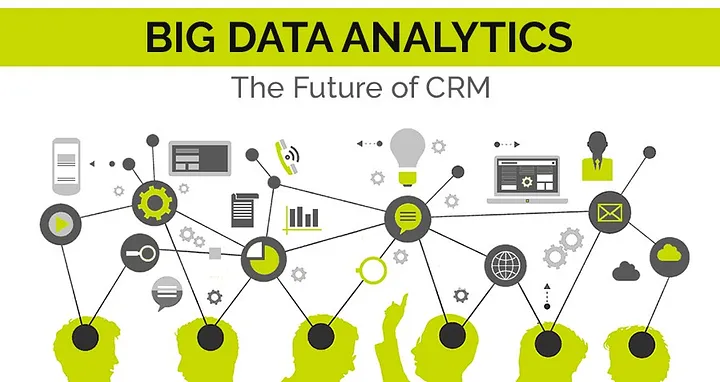
Data management serves as the cornerstone of effective Customer Relationship Management (CRM), underpinning the collection, storage, organization, and analysis of customer data. This fundamental process empowers businesses to make informed decisions and offer personalized interactions. Here’s a breakdown of its pivotal role in CRM:
- Data Collection: CRM systems act as data hubs, gathering information from a multitude of sources, including website interactions, social media, email responses, and sales transactions. This comprehensive data pool provides a panoramic view of the customer’s journey, enabling businesses to gain deeper insights.
- Data Organization: The orderly organization and categorization of data within the CRM system are essential. This entails structuring customer information based on demographics, purchase history, communication history, and more. Well-organized data facilitates swift access and retrieval.
- Data Accuracy: Clean and precise data is the lifeblood of (CRM). Inaccurate data can introduce errors into marketing and sales efforts, leading to suboptimal outcomes. Regular data cleansing and validation procedures are indispensable for maintaining data integrity.
- Data Security and Privacy: The safeguarding of customer data is paramount. CRM systems must adhere to stringent data security standards and privacy regulations to foster trust and confidence among customers. Ensuring the privacy and security of customer information is non-negotiable.
Data analytics emerges as a potent tool within (CRM), empowering businesses to make informed decisions. Here’s how it functions:
- Customer Insights: Data analytics plunges into customer behaviour, preferences, and needs, providing a profound understanding. It unveils trends, such as the popularity of specific products and the effectiveness of various marketing channels.
- Predictive Analytics: Predictive analytics leverages historical data to forecast future customer behaviour. This forecast serves as a compass for anticipating sales trends, identifying high-value leads, and optimizing marketing strategies.
- Segmentation: Analytics tools enable businesses to segment their customer base based on diverse criteria. This segmentation is the springboard for personalized marketing campaigns crafted to resonate with distinct customer groups.
- ROI Measurement: Analytics quantifies the return on investment (ROI) of marketing campaigns, aiding businesses in judicious resource allocation. This data-driven approach fine-tunes budgeting and strategy.
Tips for harnessing customer data for personalized marketing and sales strategies include:
- Segmentation: Harness (CRM) data to segment your customer base based on demographics, behaviour, and preferences. Tailor marketing messages and product recommendations to suit each segment.
- Behaviour-Based Triggers: Implement automated triggers within your CRM to deploy personalized messages in response to customer actions, such as abandoned shopping carts or prior purchases.
- Recommendation Engines: Integrate recommendation engines into your CRM, utilizing customer data to suggest relevant products or services. This approach, notably championed by e-commerce giants like Amazon, drives engagement and sales.
- A/B Testing: Continuously experiment with and refine your marketing and sales strategies. Leverage CRM data to assess the performance of different approaches and make data-informed adjustments for optimized results.
- Feedback Loops: Cultivate a culture of customer feedback and leverage it to enhance products, services, and customer experiences. An integrated CRM can streamline the management and action of this valuable input.
- Customer Journey Mapping: Employ your CRM to map the customer journey, identifying key touchpoints. Ensure the consistent provision of relevant content and assistance at each stage, fostering enriched customer experiences and loyalty.
In essence, data management and analytics are the cornerstones of CRM, infusing decision-making with insights and enabling businesses to offer tailored experiences. By embracing these principles, organizations can thrive in a customer-centric business landscape.
Here are two real-world case studies of businesses that have achieved significant growth through the implementation of CRM, along with specific strategies and outcomes:
Case Studies
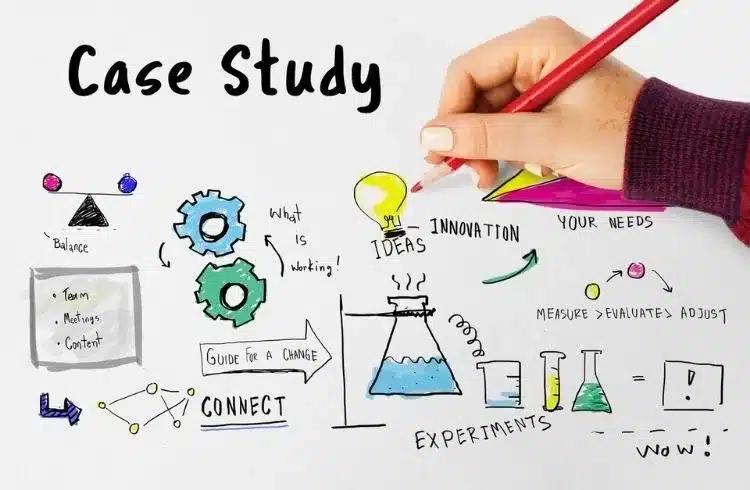
Case Study 1: Zappos
Business Background: Zappos is an online shoe and clothing retailer known for its exceptional customer service. The company was founded in 1999 and quickly gained a reputation for its dedication to customer satisfaction. In 2009, Zappos was acquired by Amazon, but it maintained its unique approach to customer service.
CRM Strategy: Zappos leveraged CRM to build and nurture strong customer relationships. They implemented a customer-centric approach where every customer interaction was an opportunity to build a lasting connection. Key strategies included:
- 360-Degree Customer View: Zappos collected extensive data on customer preferences, past purchases, and interactions. This allowed them to personalize the customer experience.
- 24/7 Customer Support: Zappos offered around-the-clock customer service, ensuring customers could reach out at their convenience.
- Easy Returns and Refunds: Zappos had a no-questions-asked return policy, making it hassle-free for customers to return products they were dissatisfied with.
Outcomes: Zappos’ CRM-driven strategies resulted in remarkable outcomes:
- Exponential Growth: The company’s revenue grew from $1.6 million in 2000 to over $2 billion in 2010.
- Customer Loyalty: Zappos built a fiercely loyal customer base. Customers often praised their service and were more likely to become repeat buyers.
- Brand Reputation: Zappos became synonymous with exceptional customer service, earning a strong brand reputation and trust.
Case Study 2: Marriott International
Business Background: Marriott International is one of the world’s largest hotel chains, operating thousands of hotels and resorts across the globe. Marriott has been a pioneer in the hospitality industry, emphasizing guest satisfaction and personalized experiences.
CRM Strategy: Marriott implemented CRM to enhance the guest experience and drive business growth. Their strategies included:
- Marriott Bonvoy Loyalty Program: The Bonvoy program offered rewards to frequent guests, including room upgrades, free nights, and exclusive experiences.
- Personalized Guest Profiles: Marriott collects data on guest preferences, such as room types, dining preferences, and amenities. They use this data to customize guest experiences.
- Mobile App: Marriott’s mobile app allows guests to check in, make requests, and access information, enhancing convenience and personalization.
Outcomes: Marriott’s CRM initiatives led to remarkable results:
- Loyalty and Repeat Business: The Marriott Bonvoy program garnered millions of members, fostering guest loyalty and repeat business.
- Increased Revenue: Marriott’s focus on personalized experiences led to higher guest spending, contributing to revenue growth.
- Operational Efficiency: The mobile app streamlined check-in and service requests, reducing operational costs and enhancing the guest experience.
These case studies highlight how CRM can be a game-changer for businesses in different industries. By prioritizing customer relationships, personalization, and data-driven decision-making, both Zappos and Marriott achieved significant growth, solidified customer loyalty, and enhanced their brand reputation.
Challenges and Solutions
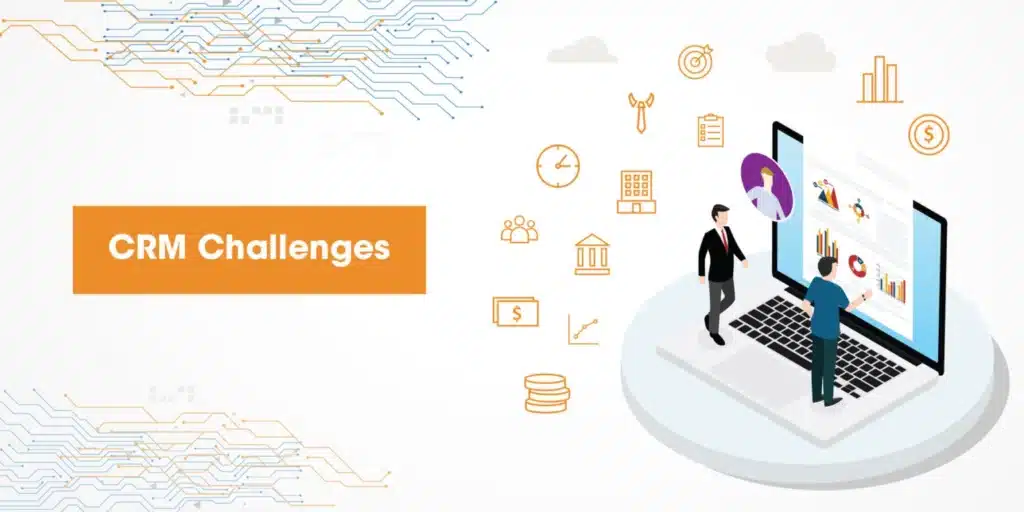
Common Challenges When Adopting CRM
- Data Quality and Integration Challenges:
- Challenge: Inconsistent or incomplete data and difficulties in integrating CRM with existing systems can hinder the effectiveness of CRM.
- Solution: Implement data cleansing procedures and data validation checks. Consider data migration tools and integration platforms to ensure data consistency and seamless connectivity with other systems.
- Resistance to Change:
- Challenge: Employees may resist adapting to a new CRM system due to fear of complexity or disruption.
- Solution: Provide comprehensive training and ongoing support to ease the transition. Engage employees early in the process, involve them in system selection, and emphasize the benefits of the CRM for their roles.
- Choosing the Right CRM Solution:
- Challenge: Selecting the most suitable CRM software can be overwhelming, as there are many options available.
- Solution: Conduct a thorough needs assessment to identify specific requirements. Consider scalability, integration capabilities, and user-friendliness. Request demos, seek recommendations, and involve key stakeholders in the decision-making process.
- Overcoming Resistance to Data Entry:
- Challenge: Staff may be reluctant to consistently input data into the CRM, leading to incomplete records.
- Solution: Streamline data entry processes by automating routine data collection and reducing manual work. Show employees how accurate data benefits them directly by enhancing their productivity and customer interactions.
Ensuring a Smooth Transition and User Adoption
- Clear Communication:
- Communicate the reasons for implementing CRM, its benefits for employees, and how it aligns with the organization’s goals. Address concerns and maintain transparency throughout the process.
- User Training and Onboarding:
- Provide comprehensive training tailored to various user roles. Conduct hands-on workshops, create user guides, and offer ongoing support. Encourage users to ask questions and seek assistance when needed.
- Champion Users and Power Users:
- Identify and empower “champion users” within the organization who are enthusiastic about CRM. They can serve as advocates, offer assistance to colleagues, and promote adoption.
- Gradual Rollout:
- Start with a phased rollout, focusing on specific departments or teams before scaling up. This approach allows for a smoother transition, with lessons learned from early stages applied to subsequent phases.
- Customization and Personalization:
- Tailor the CRM system to align with specific job roles and responsibilities. Personalization enhances user experience and makes the system more relevant to individual users.
By addressing common challenges and following a user-focused approach, businesses can ensure a smoother transition to CRM and higher levels of user adoption. Effective user adoption is essential for maximizing the benefits of CRM and driving business growth.
Future Trends in CRM
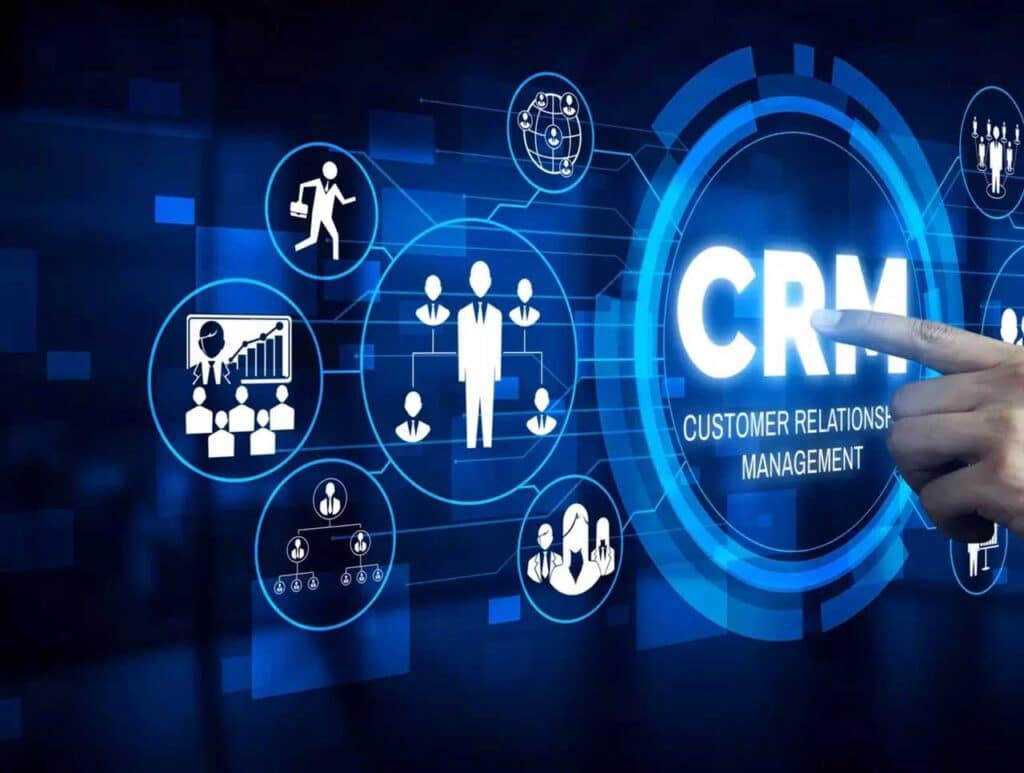
Emerging Trends and Technologies in the CRM Industry
- Artificial Intelligence (AI) and Machine Learning:
- AI and machine learning are revolutionizing CRM. Predictive analytics, chatbots, and virtual assistants are being used to automate tasks, personalize interactions, and gain insights into customer behaviour.
- Voice and Conversational CRM:
- The rise of voice-activated devices and chatbots has led to conversational CRM. Businesses are leveraging voice search and messaging apps to engage with customers through natural language conversations.
- Omnichannel CRM:
- Customers expect seamless experiences across various channels, including social media, email, phone, and chat. Omnichannel CRM solutions centralize data from these channels for a unified view of customer interactions.
- Customer Data Platforms (CDPs):
- CDPs are becoming more popular as they offer a unified database for customer data. They enable businesses to gather, manage, and activate customer data from multiple sources to drive personalized marketing and sales efforts.
- Blockchain for Data Security:
- Blockchain technology is being explored for enhancing data security and trust in CRM. It can provide a transparent and immutable record of customer data and interactions, strengthening data privacy and integrity.
The Competitive Edge of Staying Updated with CRM Trends
Staying updated with CRM trends provides several competitive advantages for businesses:
- Enhanced Customer Engagement:
- Adopting the latest CRM technologies allows businesses to engage with customers in ways that align with current preferences. Whether through chatbots, social media, or personalized recommendations, staying current enhances the quality of customer interactions.
- Data-Driven Decision-Making:
- CRM trends often revolve around advanced analytics and AI-driven insights. Businesses that leverage these technologies gain a more profound understanding of customer behaviour, enabling data-driven decision-making.
- Personalization and Customer Retention:
- Modern CRM trends emphasize personalization and the ability to anticipate customer needs. Businesses that embrace these trends can retain customers more effectively by offering tailored experiences.
- Operational Efficiency:
- CRM trends often focus on streamlining processes and improving automation. This can lead to increased operational efficiency, reduced costs, and improved overall productivity.
- Adaptation to Market Changes:
- As customer expectations evolve and new communication channels emerge, businesses that stay updated with CRM trends are better positioned to adapt to changing market dynamics and remain competitive.
Staying updated with CRM trends and technologies is essential for businesses looking to gain a competitive edge in the modern marketplace. It empowers them to deliver exceptional customer experiences, make data-driven decisions, and maintain operational efficiency while adapting to evolving customer expectations and market conditions.
See Also: Fake Job Listings: How to Protect Yourself from Online Fraud
Conclusion
Customer relationship Management (CRM) is a vital strategic approach that empowers businesses to build lasting relationships with their customers, drive growth, and thrive in the competitive modern business landscape.
CRM’s significance lies in its ability to enhance customer satisfaction, increase loyalty, and drive profitability by tailoring products, services, and communication to align with customer expectations.
CRM contributes to business growth through increased sales, improved customer retention, and enhanced decision-making, as exemplified by case studies from companies like Zappos and Marriott.
CRM systems’ pivotal features and tools, including contact management, sales automation, and analytics, play a crucial role in supporting business growth. Effective CRM implementation requires careful planning, the selection of the right CRM software, the creation of custom workflows, and seamless integration with existing systems.
It’s a journey that, when undertaken thoughtfully, can lead to transformative outcomes. Data management is the backbone of CRM, facilitating personalized marketing and sales strategies through data analytics.
Leveraging customer data for segmentation, behaviour-based triggers, recommendation engines, and A/B testing enhances customer engagement and drives business growth.



